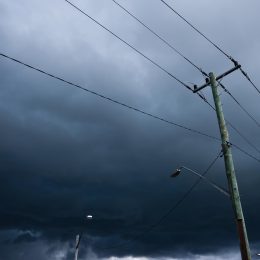National Rural Utilities Cooperative Finance Corporation (CFC) is a nonprofit finance cooperative created and owned by the electric cooperative network. It provides financing to member organizations including Orange County REMC. One of the many benefits of being part of CFC is a yearly report that compares electric cooperatives in several key areas.
CFC calls this report the Key Ratio Trend Analysis, or KRTA. The KRTA for 2016 was released back in July, and I wanted to share some of those results and speak to how Orange County REMC compares to other cooperatives across the United States, Indiana, and specifically to other co-ops in southern Indiana that receive their power from Hoosier Energy, our power supplier. Because the report includes the most important 145 ratios, I won’t cover them all.
Looking at the basics, Orange County REMC served an average of 7,814 members, selling nearly 111 million kWhs, distributed over a system that is worth more than $38 million and includes 1,104 miles of line. These ratios put us in the bottom 25 percent of the U.S. as far as size, or in other words, Orange County REMC is one of the smallest cooperatives in the country.
Financially, the co-op continues to meet all financial obligations without charging the member too much at the same time. Our operating times interest earned ratio, which is a measure of our ability to generate sufficient revenues from operations in order to repay long term debt, is low. A very high ratio could indicate excess revenues are being generated by the cooperative. In 2016, this ratio was 2.13 which placed us 33rd of 37 co-ops in the state and 14 of 17 in Hoosier Energy. Orange County REMC does finance a portion of the line construction each year, but balances that with rates. Being ranked near the bottom with this ratio indicates the revenue we are generating with our rates is not excessive. With that, Orange County REMC was again 33rd of 37 in the state when looking directly at operating margins per member.
Another financial ratio of note is the blended interest rate. The rate achieved in 2016 through an ongoing effort to minimize these costs ranked us 780th out of 801 cooperatives nationally and next to last out of the 37 cooperatives in the state. This ranking indicates that of the debt that Orange County REMC does have, we manage the cost of that debt well.
When looking at the total operating expense per kWh sold, Orange County REMC ranks third of 37. That means considering the expenses of operating the plant, compared to the energy we sell, we rank high. There are inherent costs of the plant, no matter what size the system. But, since our system National Rural Utilities Cooperative Finance Corporation (CFC) is a nonprofit finance cooperative created and owned by the electric cooperative network. It provides financing to member organizations including Orange County REMC. One of the many benefits of being part of CFC is a yearly report that compares electric cooperatives in several key areas.
CFC calls this report the Key Ratio Trend Analysis, or KRTA. The KRTA for 2016 was released back in July, and I wanted to share some of those results and speak to how Orange County REMC compares to other cooperatives across the United States, Indiana, and specifically to other co-ops in southern Indiana that receive their power from Hoosier Energy, our power supplier. Because the report includes the most important 145 ratios, I won’t cover them all.
Looking at the basics, Orange County REMC served an average of 7,814 members, selling nearly 111 million kWhs, distributed over a system that is worth more than $38 million and includes 1,104 miles of line. These ratios put us in the bottom 25 percent of the U.S. as far as size, or in other words, Orange County REMC is one of the smallest cooperatives in the country.
Financially, the co-op continues to meet all financial obligations without charging the member too much at the same time. Our operating times interest earned ratio, which is a measure of our ability to generate sufficient revenues from operations in order to repay long term debt, is low. A very high ratio could indicate excess revenues are being generated by the cooperative. In 2016, this ratio was 2.13 which placed us 33rd of 37 co-ops in the state and 14 of 17 in Hoosier Energy. Orange County REMC does finance a portion of the line construction each year, but balances that with rates. Being ranked near the bottom with this ratio indicates the revenue we are generating with our rates is not excessive.
Matthew C. Deaton
General Manager/CEO




